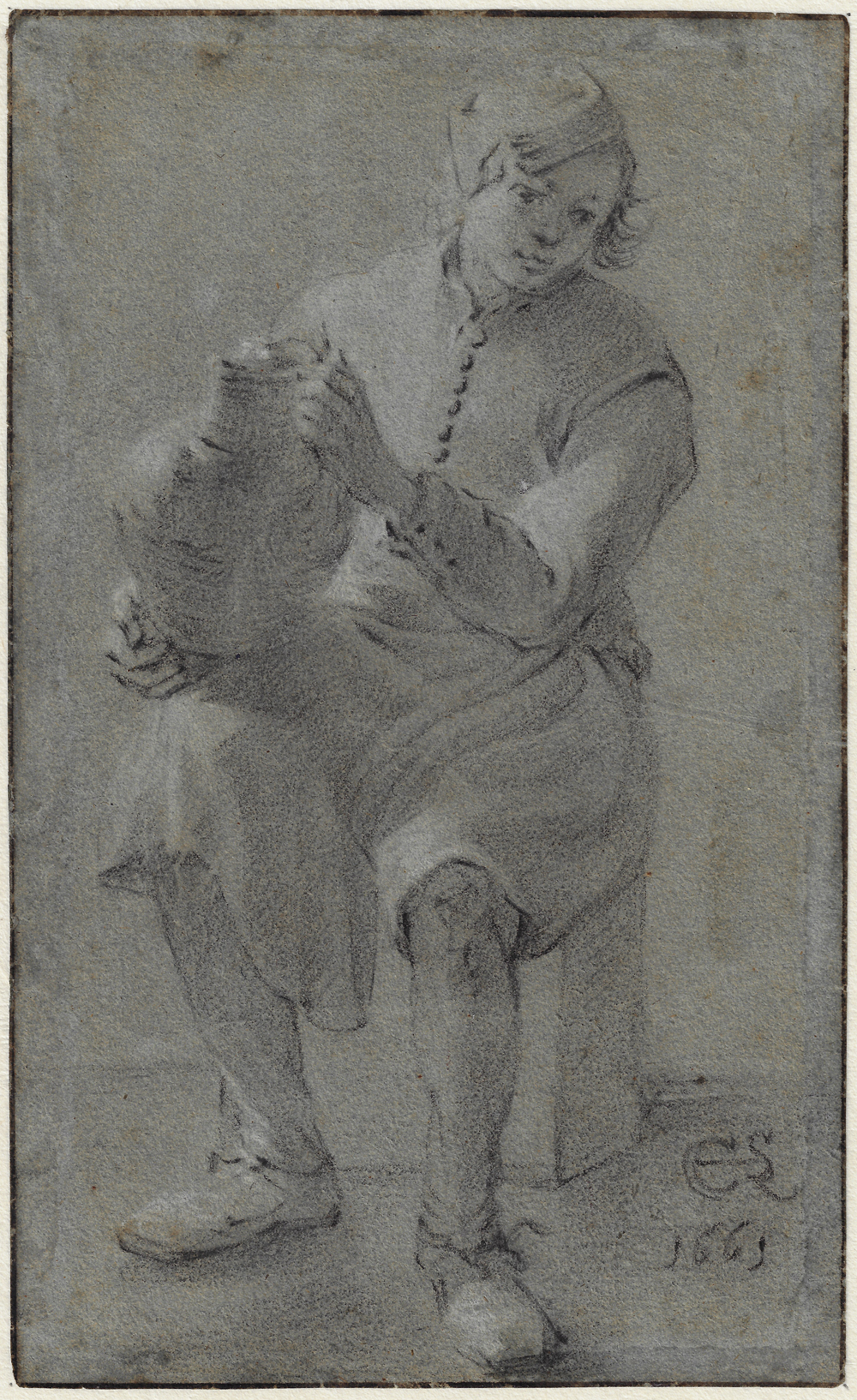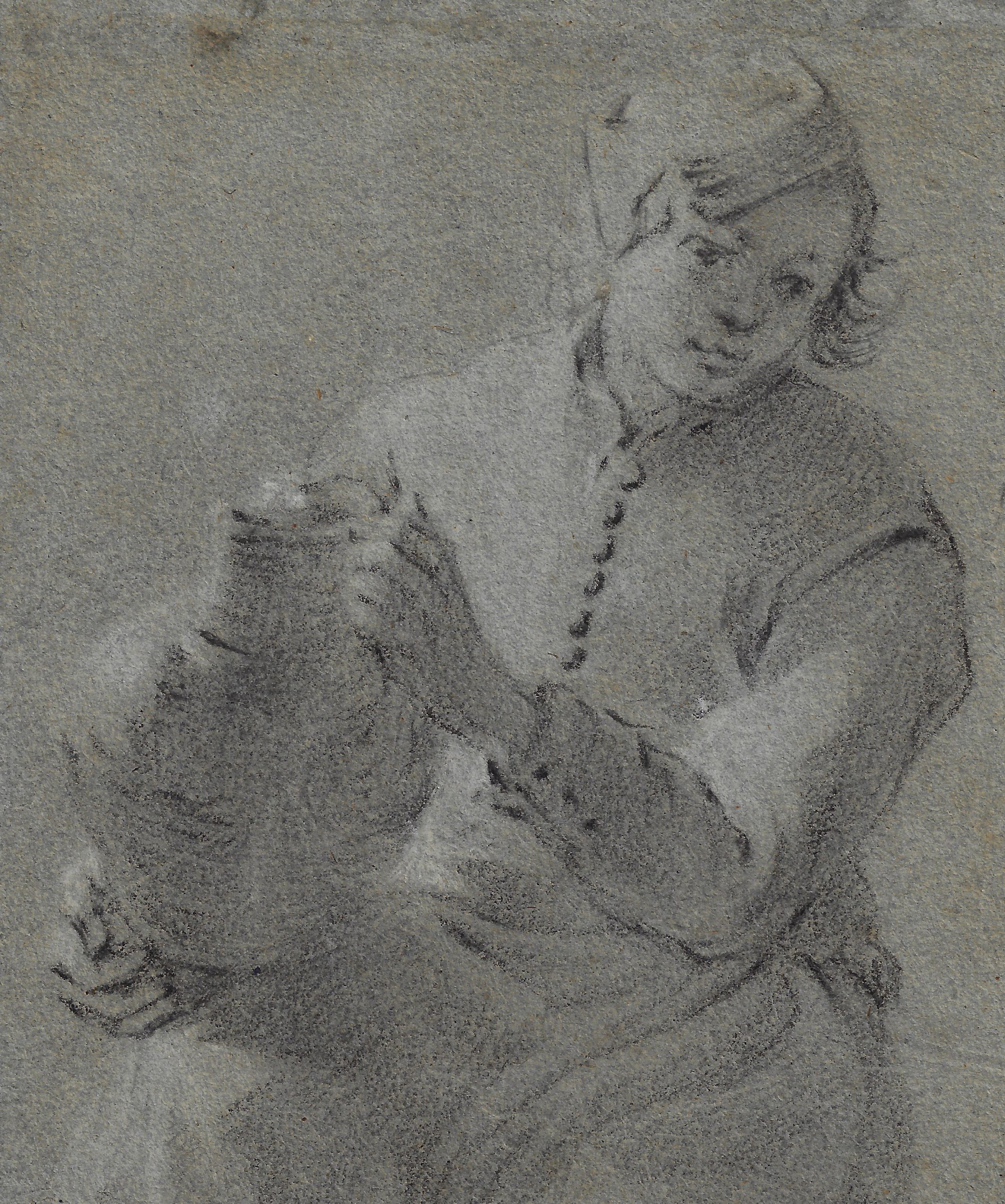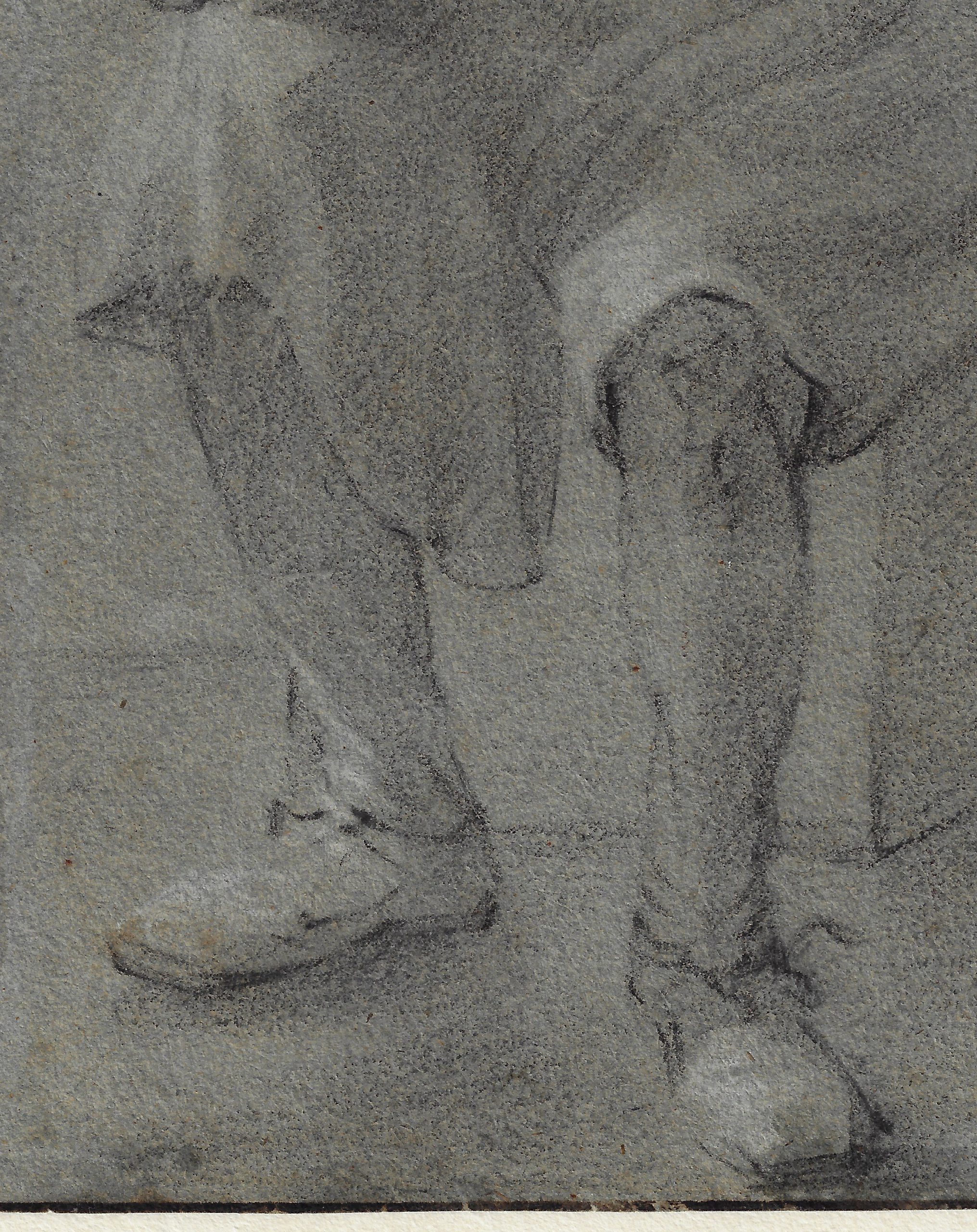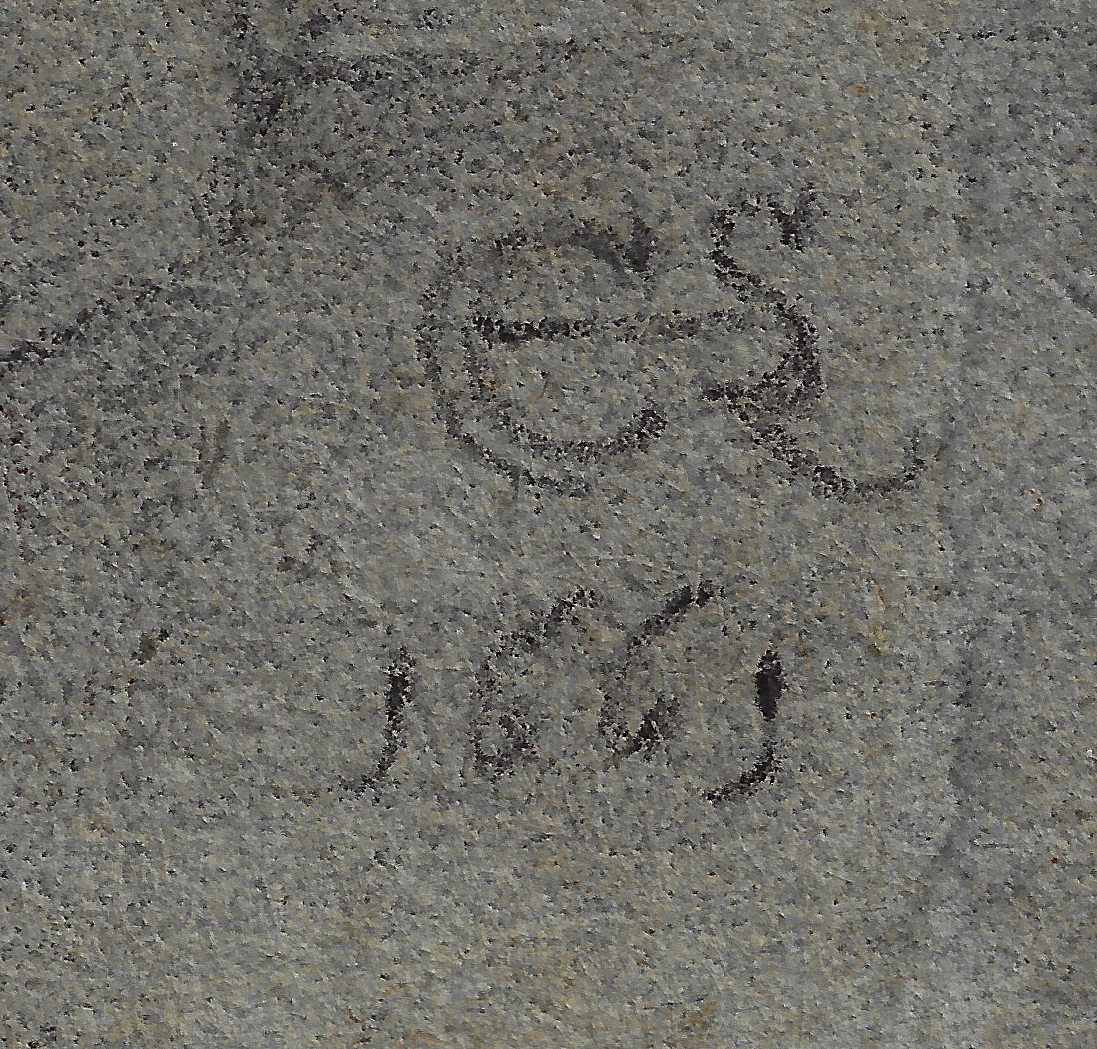CORNELIS SAFTLEVEN (Gorinchem 1607 – 1681 Rotterdam)
Cornelis Saftleven (Gorinchem 1607 – 1681 Rotterdam)
A Young Man Holding a Jug
Black and white chalk, brown ink framing lines, on blue paper, 253 x 154 mm (10 x 6.1 inch)
Signed with initials and dated ‘C SL / 1661’ (lower right)
Provenance
~ George and Maida Abrams, Boston, USA
~ Private collection, The Netherlands
***
Cornelis was the son and pupil of the painter Herman Saftleven the Elder (c.1580–1627) and the brother of the landscape painter Herman Saftleven II (1609–1685).1 Soon after Cornelis’s birth, the family moved to Rotterdam. His earliest dated paintings show fanciful animal allegories and scenes of hell. From 1632 to 1634 Cornelis was active in Antwerp, where Anthony van Dyck made a portrait drawing of him, which was engraved for the Iconographia series, entitled ‘Hollandus Pictor Noctium Phantasmatum’ – Dutch painter of nightly and fantastic scenes. Rubens was an admirer of the young Saftleven; no less than eight paintings by Cornelis are listed in the inventory of Rubens’s possessions following his death in 1640. In four of these, Rubens had painted the figures. Saftleven was also close to David Teniers II, and together they developed the genre of the peasant stable interior which had been pioneered by Adriaen Brouwer.
By the end of 1634 Saftleven was working in Utrecht with his brother Herman, and by 1637 he had settled in Rotterdam. Saftleven taught Abraham Hondius, Ludolf de Jongh, and Egbert van der Poel. Saftleven also appears to have influenced Pieter de Hoogh, mainly in his dark tavern interiors of the early 1650s.2 Studies by Saftleven such as the present sheet however also seem strikingly similar to seated figures in some of De Hoogh’s interior scenes.
Saftleven was a highly prolific draughtsman, who treated a wide variety of subjects. He is best known for his carefully observed drawings of single figures and his studies of animals, which show an awareness of the work of Roelandt Savery. Saftleven was proud of his talents as a draughtsman, and in his sensitive early self-portrait of c. 1628 in the Fondation Custodia in Paris he depicts himself holding a drawing of a monkey.3 Saftleven frequently monogrammed and dated his drawings, suggesting they were intended as finished works for sale to collectors of ‘papierconst’. Dated drawings are known from almost every year between 1625 and 1677. They were very rarely related to his paintings.
In this well-observed sheet, Saftleven has used a combination of white and red chalk on blue paper, which creates a particularly sculptural effect. Our drawing can for instance be compared to Saftleven’s Seated Man with Pipe in the Rijksmuseum, Amsterdam, which was done in the following year (fig).4
SOLD
1. For the artist, see: W. Schultz, Cornelis Saftleven 1607–1681: Leben und Werke, mit einem kritischen Katalog der Gemälde und Zeichnungen, Berlin 1978.
2. See Walter Liedtke, with Michiel Plomp and Axel Rüger, Vermeer and the Delft School, exh. cat. London (National Gallery) and New York (Metropolitan Museum) 2001, pp. 134-35.
3. Oil on copper, 21.1 x 15.5 cm, collection Frits Lugt, Fondation Custodia, Paris; see Q. Buvelot, H. Buijs and E. Reitsma, A choice collection. Seventeenth-century Dutch paintings from the Frits Lugt Collection, Zwolle 2002, cat. no. 29, repr.
4. Black chalk, some pen and brown ink, 292 x 206 mm, inv. no. RP-T-1989-104; see F.L. Bastet a.o., De verzameling van Mr Carel Vosmaer (1826–1888), exh. cat. Amsterdam (Rijksprentenkabinet) 1989, p. 67, cat. no. 23.




